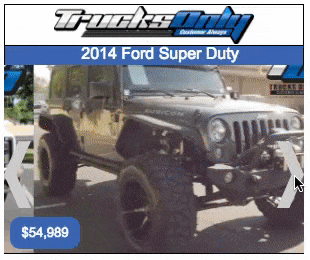 Do you use Google Shopping to sell your products or do you think your business is too small to compete with larger businesses that have bigger budgets? With careful planning and execution, using Product Listing Ads within Google Shopping can be a very effective digital advertising platform. Here are four strategies for your smaller e-commerce business to find success.
Do you use Google Shopping to sell your products or do you think your business is too small to compete with larger businesses that have bigger budgets? With careful planning and execution, using Product Listing Ads within Google Shopping can be a very effective digital advertising platform. Here are four strategies for your smaller e-commerce business to find success.
- Focus on your niche
What makes you unique? Why would someone buy from you? Your uniqueness adds value and will make your ads stand out to online shoppers. Focus your campaigns on new, niche, or unknown brands – different products that aren’t sold by big box retailers or Amazon. This exclusivity helps separate you from your competition. Selling unique products means there’s less competition to appear in Google Shopping for relevant searches.
- Segment your campaigns
Segmenting your campaigns correctly will help you deliver ads to the most relevant, ready-to-buy audiences. Focus on capturing high-converting traffic by making sure your ads appear to high-conversion queries. By segmenting your campaigns into the type of queries that receive high, medium and low conversion rates you can set bid amounts that correlate to the user’s intent. Bid more for high-converting queries and less for generic searches.
- Leverage location-based targeting
Target location to make sure your ads are reaching shoppers who are most likely to purchase your products. Are consumers in certain areas more likely to be interested in what you are selling? Depending on what your goals are, you can bid higher for your ads to show in very specific areas. If you sell gas fireplaces with all the bells and whistles, you may decide to bid more for ads shown in high-income areas with colder climates where buyers have a budget for your custom fireplaces.
- Use RLSA lists
Most consumers who click on a Product Listing Ad are usually close to making a purchase decision. Pairing your ads with RLSA (remarketing lists for search ads) allows you to bid more for ads that will be shown to people who have already visited your site or made a previous purchase. Consumers who have existing knowledge of your business are more likely to make a purchase.
The key to making a sale is delivering the right message to the right person at the right time. We can help you create and execute a multi-faceted advertising campaign that puts your products in front of interested buyers. Contact us today!
 When consumers begin their car search, they are turning to their smartphones to research this huge purchase. The car shopping journey is increasingly influenced by mobile, instead of dealership visits. According to a Google study, the average car shopper in 2006 made five visits to dealerships in order to research potential vehicles. Ten years later, that number has dropped to two. With buyers making limited visits to dealerships, it’s critical that you have an ad strategy in place to reach active buyers.
When consumers begin their car search, they are turning to their smartphones to research this huge purchase. The car shopping journey is increasingly influenced by mobile, instead of dealership visits. According to a Google study, the average car shopper in 2006 made five visits to dealerships in order to research potential vehicles. Ten years later, that number has dropped to two. With buyers making limited visits to dealerships, it’s critical that you have an ad strategy in place to reach active buyers. Online car research and shopping creates ease and convenience for the buyer, but can pose a challenge for dealerships. As consumer behavior changes, you need to shift your strategy to deliver relevant ads to high-quality prospects. What is the best way to reach consumers online and deliver a compelling ad that drives traffic to your site?
Online car research and shopping creates ease and convenience for the buyer, but can pose a challenge for dealerships. As consumer behavior changes, you need to shift your strategy to deliver relevant ads to high-quality prospects. What is the best way to reach consumers online and deliver a compelling ad that drives traffic to your site? Since its launch just six months ago, Instagram Stories have become wildly popular with users. Over 150 million people interact with Stories on a daily basis and now, you have the opportunity to display ads to this engaged audience. Capitalize off of Instagram and Facebook’s powerful connection by creating ads that reach users within Instagram Stories.
Since its launch just six months ago, Instagram Stories have become wildly popular with users. Over 150 million people interact with Stories on a daily basis and now, you have the opportunity to display ads to this engaged audience. Capitalize off of Instagram and Facebook’s powerful connection by creating ads that reach users within Instagram Stories.

 Facebook continues to evolve and develop new opportunities for advertisers and publishers. Most recently, Facebook started
Facebook continues to evolve and develop new opportunities for advertisers and publishers. Most recently, Facebook started 

 Five recent statistics confirm what we already know: mobile is growing and it’s necessary to reach your audience on this platform. After each key statistic, we’ve highlighted an action point suggesting what you should include in your marketing strategy to capitalize off of mobile consumer behavior.
Five recent statistics confirm what we already know: mobile is growing and it’s necessary to reach your audience on this platform. After each key statistic, we’ve highlighted an action point suggesting what you should include in your marketing strategy to capitalize off of mobile consumer behavior.